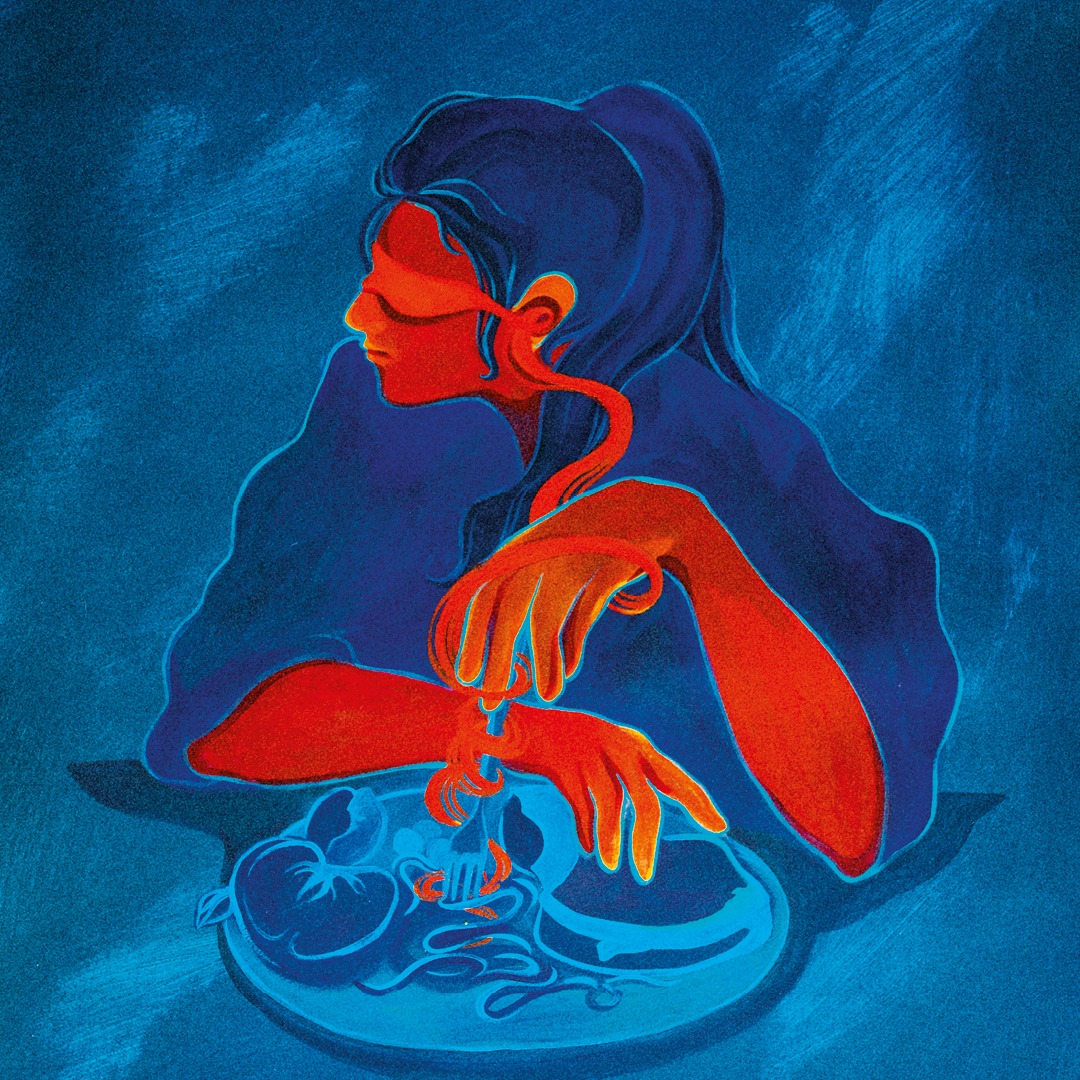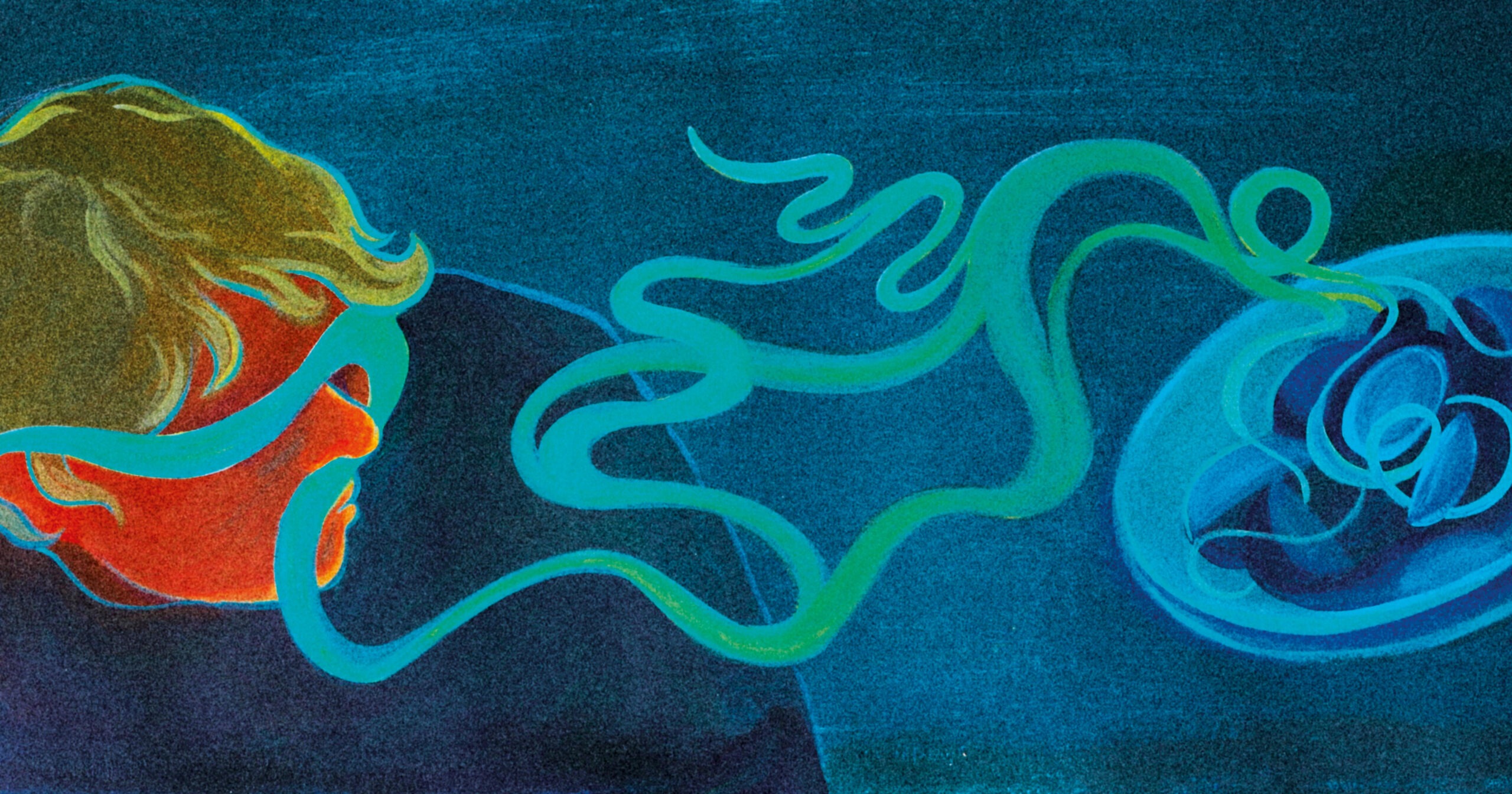Have you ever been captivated by a beautifully plated dish of food, only for your first bite to reveal it was more style than substance? Or maybe you’ve turned your nose up at a lumpy, unremarkable stew but then been won over by its depth of flavour. If so, you’re not alone.
Sight shapes a person’s experience of food, influencing perception long before a bite’s been eaten. In a 2024 study, for example, researchers reported how participants were less likely to purchase fruits and vegetables, specifically tomatoes and sweet peppers, that didn’t look perfect. Anything oddly shaped was deemed ‘suboptimal’ and disregarded. When participants tasted the produce, however, their perception shifted and they became more willing to purchase it. An earlier 2014 experiment, which tested reactions to presentation, similarly discovered that diners in a restaurant reported ‘liking the food on the plate… more when it was presented in the more attractive than the less attractive manner’, despite the fact the dishes comprised the same food.
Out of sight
So what happens when vision is taken out of the equation? Without visual cues, do diners engage more deeply with their food, perhaps focusing on other qualities – texture, aroma, sound – that are often overlooked? And could this foster a more mindful and flavour-oriented eating experience? One way to find out is to try dining in the dark, a sense-heightening experience pioneered in restaurants such as the multi-location Dans Le Noir? (see ‘Into the dark’ in Breathe 74). Of course, for blind chefs and bakers, eating and cooking without visual cues is the norm. And their experience suggests that sight is only one of the important tools in the kitchen.
‘There are lots of difficult and scary challenges for a blind person in a culinary environment,’ says Debra Erickson, executive chef and founder of The Blind Kitchen, an initiative that provides accessible cooking tools for blind and vision-impaired cooks. ‘Knives and heat immediately come to mind,’ she adds, ‘[and] the challenge of being comfortable with being slower in navigating my kitchen can be frustrating. But on the other side of that frustration is a gift: a gift of being more present in my cooking activities, of needing to listen closer, smell more mindfully and focus on the information my fingertips and ears are providing.’
Flavour of the moment
In essence, Debra’s description invites a more multisensory approach to the experience of eating – one that understands the difference between taste and flavour. Jessica Faye is general manager of London’s Dans Le Noir? She says: ‘Dining in total darkness reveals just how much we rely on sight to interpret flavours. Without visual cues, even familiar ingredients become surprisingly difficult to identify. Guests often get mixed up between fish and chicken or mistake red wine for white.’ This is supported by reviewers’ posts, with some admitting to thinking cod was salmon and others explaining how they’d completely failed to guess the meat element, suspecting maybe gammon, only to discover it was a tuna steak with deep-fried kale crisps.
‘One fascinating pattern we’ve observed is how the [dining-in-the-dark] experience shifts guests’ approach to eating. Instead of relying on appearance, they focus more on texture, aroma and subtle nuances,’ Jessica continues. ‘Many tell us it changes the way they think about food, making them more mindful and appreciative of taste beyond what meets the eye.’
Enhancing the other senses
Of course, creating dishes for any restaurant requires invention, but with the visual cues removed, chefs are forced to pay greater attention to aroma, texture, temperature and even sound. This presents opportunities as well as challenges. Says Jessica: ‘While we don’t intentionally select ingredients that might sound unappealing, we do incorporate elements that guests might not usually choose if they could see the menu.’ And previous menus have included so-called more exotic meats, such as crocodile and buffalo (guests advise the restaurant of any dietary requirements and allergens in advance). ‘Our head chef [also] pays particular attention to texture, creating dishes that surprise and intrigue,’ Jessica adds. ‘We love to help guests rediscover familiar ingredients in new and exciting ways, proving that, sometimes, perception is everything when it comes to taste.’
Guiding the way
As with most things, the concept of dining in the dark isn’t new. It’s thought to date back to the 18th century, when charitable foundations in France and Switzerland organised events to raise awareness of blindness, allowing people to experience a meal without the sense of sight. Jump forward to 1997 and Michel Reilhac offered diners at his Paris restaurant, Le Goût du Noir (The Taste of Black), the chance to enjoy food and drink entirely in the dark, with blind and visually impaired staff serving the meals. And their inclusion remains an integral part of the now global dining-in-the-dark restaurant experience, which advocates for greater inclusivity in the workspace.
Leading lights
As more restaurants embrace a multisensory-driven approach to dining – be that with or without visual cues – blind and visually impaired chefs offer an invaluable perspective. ‘All of the senses should be taken into consideration when curating the dining experience or venue,’ says Christine Hà, owner of modern Vietnamese eaterie The Blind Goat, in Houston, Texas, and the first blind contestant to appear on – and ultimately win – MasterChef in the US. ‘It’s important to adjust the temperature appropriately for maximum comfort for most diners, ensure the restaurant is full of tantalising gastronomical aromas during service and have low-volume music and sound-dampening devices placed strategically to help reduce conversational and dining noise.’
Her thoughts on menus are equally rounded. ‘Other aspects of a dish, aside from visual presentation, become an organic and natural part of how I design dishes, taking into consideration texture, temperature and balance of flavours. I wouldn’t say I intentionally focus on texture when coming up with a dish, but I think about how there needs to be balance and contrast. For example, if you have something silky and puréed, that tends to connote a comfort mindset. You want to contrast that with something a little crispy or crunchy, like a side of crispy sesame rice cracker or sprinkling of roasted peanuts or crispy shallots, to break up the texture monotony.’
Julie Woods, a blind chef, baker, cooking coach, author and disability advocate from Dunedin, New Zealand, agrees: ‘A lot of sighted cooks get caught up in the presentation of food, which I totally get, but there can be so much pressure to get it looking beautiful. Blind people don’t get satisfaction from visual presentation, so it must come from our other senses, such as touch, smell, sound and taste. I don’t know why, but food seems to taste better when it’s been cooked by someone who has adapted to the barriers they face in the kitchen. Maybe that’s because eating is an emotional experience. It’s like when food is made by someone you love – it’s always better.’
Another believer in the multisensory approach is UK-based Penny Melville-Brown, a blind baker and winner of the Holman Prize for Blind Ambition. Her aim is to change attitudes towards people with disabilities, advocating for greater inclusivity and understanding in the culinary world, as well as inviting people to take a fresh approach to the whole process of baking and eating. ‘When I’m cooking, all my remaining senses are still standing to attention, taking in information and using it to test the food: is it fresh enough, cooked enough, interesting enough?’ she says. ‘I use my hearing all the time. Listening to something cooking in the oven, searing in the pan or bubbling alongside me while I’m busy on another task, means I have complete control of what’s happening.’
Bringing it all together
Dining in the dark is an opportunity to experience food in a more immersive way, one that deepens appreciation of flavour, texture and aroma. Equally as importantly, however, it’s a chance to spend time with friends, colleagues, families, acquaintances and new people. As Julie says: ‘The best thing about food is that it brings us together.’ It’s a sentiment shared by Penny, who writes on her website: ‘Food is the true universal language that breaks down barriers and brings us all together – no matter who, where or what we are.’
Science of taste
What exactly is it and how does it differ from flavour?
Taste refers to the five basic sensations perceived on the tongue: sweet, salty, sour, bitter and umami. Flavour, on the other hand, is more complex. Interviewed by Kate Orson for Breathe (issue 61) Niki Segnit, author of several books aimed at encouraging a creative approach to food and cooking, explains: ‘Taste is what your taste buds do. In science class, we’re taught a taste map of the tongue and how different areas are sensitive to different tastes. Your tongue identifies whether tastes are sweet, sour, salty, bitter or umami. Taste brings a lot of pleasure to eating, but it’s not sophisticated. It doesn’t tell us much about an ingredient.
‘Flavour [involves smell and] is mainly experienced through your olfactory bulb [located behind the bridge of the nose]. When you have a cold, [for example], you can tell when your Lemsip is very bitter, and it has lots of saccharine sweetness to cover up the bitterness, but when your cold is at its worst, you can’t tell if [the Lemsip] is lemon or blackcurrant. What you notice most when you have a cold [is that flavour] disappears.’
A person’s perception of flavour is also influenced by visual cues – a phenomenon known as sensation transference. And studies have also shown how colours and shapes alter the experience. In 2001, for example, Frédéric Brochet, then a PhD student at the University of Bordeaux II in France, famously tested the skills of 54 oenology (wine science) students. Presented with a white wine artificially coloured red with an odourless dye, the group described its flavour using typically red-wine notes, such as dark fruits or spices. And if a group of wine experts can be so influenced by a visual cue, perhaps give yourself a break if – lights off – you can’t tell apples from pears or chicken from fish.
For Dans Le Noir? visit danslenoir.com, learn about Penny’s work at pennymelvillebrown.com, and follow Christine on Instagram @theblindcook and @theblindgoathtx, and Julie @thatblindwoman


